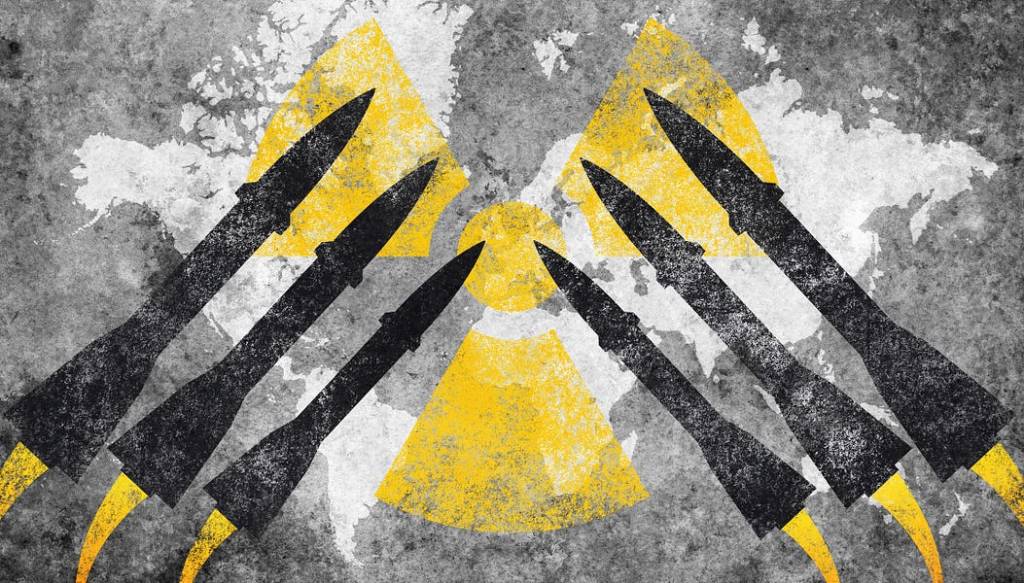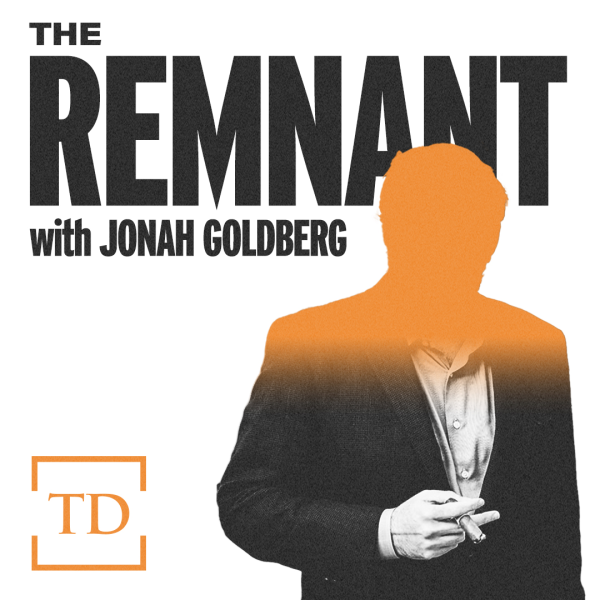Today’s explainer is a serious one: We need to talk about nuclear weapons.
Considering Russian President Vladimir Putin’s continued threats to use nukes in Ukraine, it seems prudent to clarify what weapons we’re talking about, how they might be used, and what the U.S. government is likely doing to prevent their deployment.
One caveat: I’m not a nuclear weapons expert, and many of these details are necessarily complicated. My goal is to translate these details as best I can, not to frighten you but to inform you. Deliberate and careful consideration of the issue will allow all of us to think more clearly about this very serious challenge.
So, let’s start with the basics: What is a nuclear weapon?
A nuclear weapon deliberately releases the destructive energy caused by nuclear fission, nuclear fusion, or a combination of both processes. Fission (aka “atomic”) weapons split the nucleus of an atom into two or more parts that then bump into other particles, creating a reaction that releases huge amounts of energy very quickly. Fusion (sometimes called “hydrogen”) weapons achieve this rapid release of energy by fusing atomic nuclei until they reach critical mass and then explode.
The destructive energy of a nuclear weapon is measured in kilotons (1,000 tons) or megatons (1 million tons), as a multiple of the explosive energy of the conventional explosive trinitrotoluene (TNT). So, a one-kiloton nuclear bomb would have the explosive force of 1,000 tons of TNT, and a one-megaton nuclear bomb would have the explosive force of 1 million tons of TNT.
The first nuclear weapons were air-dropped bombs, like those used by the United States on Hiroshima and Nagasaki in World War II. Nuclear warheads for ballistic missiles were created later, and these are among the largest, most destructive weapons in any nation’s nuclear arsenal. Smaller low-yield (or “tactical”) nuclear weapons also have been developed as cruise missiles, short-range ballistic missiles, torpedoes, depth charges, landmines, and even artillery munitions.
For reference, the 15-kiloton bomb used against Hiroshima destroyed five square miles and killed or wounded 135,000 people. The 22-kiloton bomb used on Nagasaki also destroyed five square miles and killed or wounded 64,000 people.
What happens when a nuclear bomb detonates?
Let’s assume the detonation of a 10-kiloton nuclear weapon. Those at or near the point of detonation will literally be vaporized by temperatures equal to the interior of the sun (about 100 million degrees Celsius). At least 50 percent of the people within a two-mile radius of ground zero would be killed immediately, according to a report by the Preventive Defense Project. This kill zone would likely be even larger if the bomb were detonated in the air above the target. These deaths would be caused by fire, overpressure, intense radiation, and other fatal injuries would be caused by collapsing buildings and flying debris. Most buildings within a half-mile of ground zero would be flattened. A bomb of this size could also create a “firestorm,” where local terrain causes fires from the blast to combine into a self-fueling wind of flames. The firestorm alone at Hiroshima, according to the U.S. Department of Energy, consumed more than 4 square miles. Any survivors within the blast radius, and many people outside of it, would likely have severe thermal burns and radiation poisoning. More injuries and fatalities would also occur because of delayed incident responses caused by the death of local doctors and nurses and the destruction of hospitals, roads, train tracks, and lines of communication. And then there’s the fallout.
Radioactive fallout is most concerning in the 48 hours after the detonation. After two days, an area initially exposed to 1,000 roentgens per hour (how we measure ionizing radiation, with a typical CT scan equaling less than one roentgen) will be down to 10 roentgens of radiation per hour, if there is no rain or snow pulling the fallout to the ground faster, and therefore with greater radioactivity. To put this into perspective: Almost half of the people exposed to 350 roentgens over two days will die from radioactive poisoning. Others exposed to radioactive fallout will have an acute risk of cancer for the rest of their lives. But it’s not just people who will be affected.
The environmental consequences could also be devastating. In the context of Ukraine specifically, where 10 percent of the world’s wheat is grown, radioactive iodine and other fallout material could land on crops, be taken up in the food supply, and produce long-term health concerns in consumers around the world.
Put simply: A nuclear blast of just 10-kilotons could unleash death and destruction well beyond the first blast radius.
How many nuclear weapons do the United States and Russia have?
According to an analysis by theFinancial Times, the American nuclear arsenal consists of 5,702 weapons, with 230 tactical (low-yield) warheads, 1,964 strategic warheads, and 3,508 warheads of various sizes held in reserve. The B83, with a yield of 1.2 megatons, is the largest American bomb. The B61-3, with a variable yield as low as 0.3 kilotons, is the smallest.
Russia has a nuclear stockpile exceeding 7,000 weapons, with at least 1,830 tactical warheads, 2,889 strategic warheads, and 2,565 warheads in reserve. In 1961, the Soviet Union developed the Tsar Bomba—the most powerful nuclear weapon ever created and tested, with an original yield of 100-megatons that was later reduced by half. Moscow’s smallest nuclear weapon is thought to have a one-kiloton yield, but most of its “tactical” nukes—like the SS-26—range between 10 and 100 kilotons.
Unlike the United States, which favors larger, strategic nuclear weapons, the Soviet Union and Russia have always valued low-yield weapons and have even used them in Ukraine—ostensibly to seal a gas well in Krasnograd in 1972 and to eliminate methane gas at a coal mine in the Donbas in 1979.
How might Putin use a nuclear weapon in Ukraine?
Consensus seems to be building around the possibility of Putin using a low-yield nuclear weapon in one of three scenarios: A demonstrative attack, an attack on a traditional military target, or an attack on a NATO member. I’ll discuss them in reverse order.
A Russian nuclear attack against a NATO country would be the most dangerous and escalatory move Putin could make. I would call this a low-probability, high-impact scenario. It’s possible Putin could rationalize that, if he’s going to use a nuke he might as well “go big,” but the consequences of such an attack are so immense and unpredictable that it’s difficult to see how even Putin could conclude that it would serve Russia’s interests.
A strike against a military target inside of Ukraine—such as a massed force or the Zaporizhzhia nuclear power plant—would make more sense; but its usefulness (beyond terrorizing the world) is still unclear. The largest groupings of Ukrainian forces are now in or near areas along Ukraine’s eastern border—zones Moscow now claims are sovereign Russian territory and where Russian troops would be exposed to radioactive fallout. Even more pragmatically, a U.S. Army study calls the utility of such an attack into question, concluding that a one-kiloton bomb would have to be within 90 meters of a tank to cause serious damage. I assess this to be a medium-probability, high-impact scenario.
The final, and in my opinion the most likely scenario, is a demonstrative detonation that does not kill anyone—such as one in or over the Black Sea, high over Ukraine where damage would be minimized, or perhaps a vacant location like Snake Island. While few or no lives may be lost in the initial blast, radioactive fallout could still be a major health risk and the detonation itself would dramatically move the situation up the escalation ladder. But again, such an act would not play decisively to Russia’s favor because it would send the confusing message that, yes, Putin is willing to break the nuclear taboo but also that he is also seemingly unwilling to use the weapons to their fullest. It would only confuse and escalate the conflict, not decisively create a Russian advantage.
This lack of a clear “upside” to a nuclear attack is the main reason I don’t believe Putin will use a nuclear weapon. But I believe he could, and his frequent threats and continued aggression mean the United States must now act as though he will.
How is the United States trying to prevent this?
It’s important to understand that U.S. efforts to track Russian nuclear warheads didn’t start with Putin’s threats to use them against Ukraine or even with his invasion of the country. Understanding the type, capability, and location of every single Russian nuclear weapon is a standing requirement for the U.S. intelligence community and has been so for decades. However, Russian efforts to hide this information from the outside world are equally old and sophisticated.
According to a 2017 report by the United Nations Institute for Disarmament Research, Russia has 47 nuclear storage sites across the federation, including a dozen “Object S” national-level facilities and 35 depots on military bases. All these locations are priority targets for intelligence collection, where everything from imagery, to signals, to human intelligence will be looking for any indication that tactical warheads are being deployed forward, 24-hours a day, seven days a week.
From the English-language Japan Times:
“I’m confident the United States would see any Russian preparations for using nuclear weapons,” said Mark Cancian, a former official in the U.S. defense and energy departments who worked on nuclear weapons issues.
“The weapons need to come out of storage, the units involved need to be alerted, and the Russians might also alert their strategic nuclear forces,” said Cancian, now at the Center for Strategic and International Studies in Washington.”
Normally, I’d agree with Cancian’s assessment. However, it’s possible that a small nuclear device could be stored and moved from an unknown location or that one has been clandestinely removed from one of these known facilities without detection. There are reasons to think Putin would want the United States to see his nuclear preparations if his goal is to extract concessions; but he might hide these actions if he is intent on using a nuke. In the end, even with the greatest intelligence collection apparatus ever assembled in the history of man, it is not safe to assume that the United States will have adequate warning of a nuclear attack in or around Ukraine. Therefore, clear communications are critical.
National Security Adviser Jake Sullivan has said several times that he and others have had direct and frank conversations with Russia, warning them that the use of a nuclear weapon would lead to “catastrophic” consequences. These warnings echo a Biden essay in the New York Times in May in which he said, “any use of nuclear weapons in this conflict on any scale would be completely unacceptable to us as well as the rest of the world and would entail severe consequences.” But talking will not be enough.
Sullivan has also said that the White House has stood up an interagency “tiger team,” tasked with developing options for the president if Russia is confirmed to be preparing, or if it successfully completes, a nuclear attack. Plans to preemptively expose or warn of these actions, military strategies for interdicting a deployed nuclear device or responding to its use, arrangements for the resultant humanitarian and ecological disaster, and proposals for rallying the international order against Russia are likely all under development and are constantly being refined. While the specific details of these and related efforts are rightly opaque, you can be confident that the U.S. government is expending considerable resources and efforts to prevent or respond to Putin’s nuclear recklessness.
Of this, I have no doubt.
That’s it for this edition of The Current. Be sure to comment on this post and to share this newsletter with your family, friends, and followers. You can also follow me on Twitter (@KlonKitchen). Thanks for taking the time and I’ll see you next week!








Please note that we at The Dispatch hold ourselves, our work, and our commenters to a higher standard than other places on the internet. We welcome comments that foster genuine debate or discussion—including comments critical of us or our work—but responses that include ad hominem attacks on fellow Dispatch members or are intended to stoke fear and anger may be moderated.